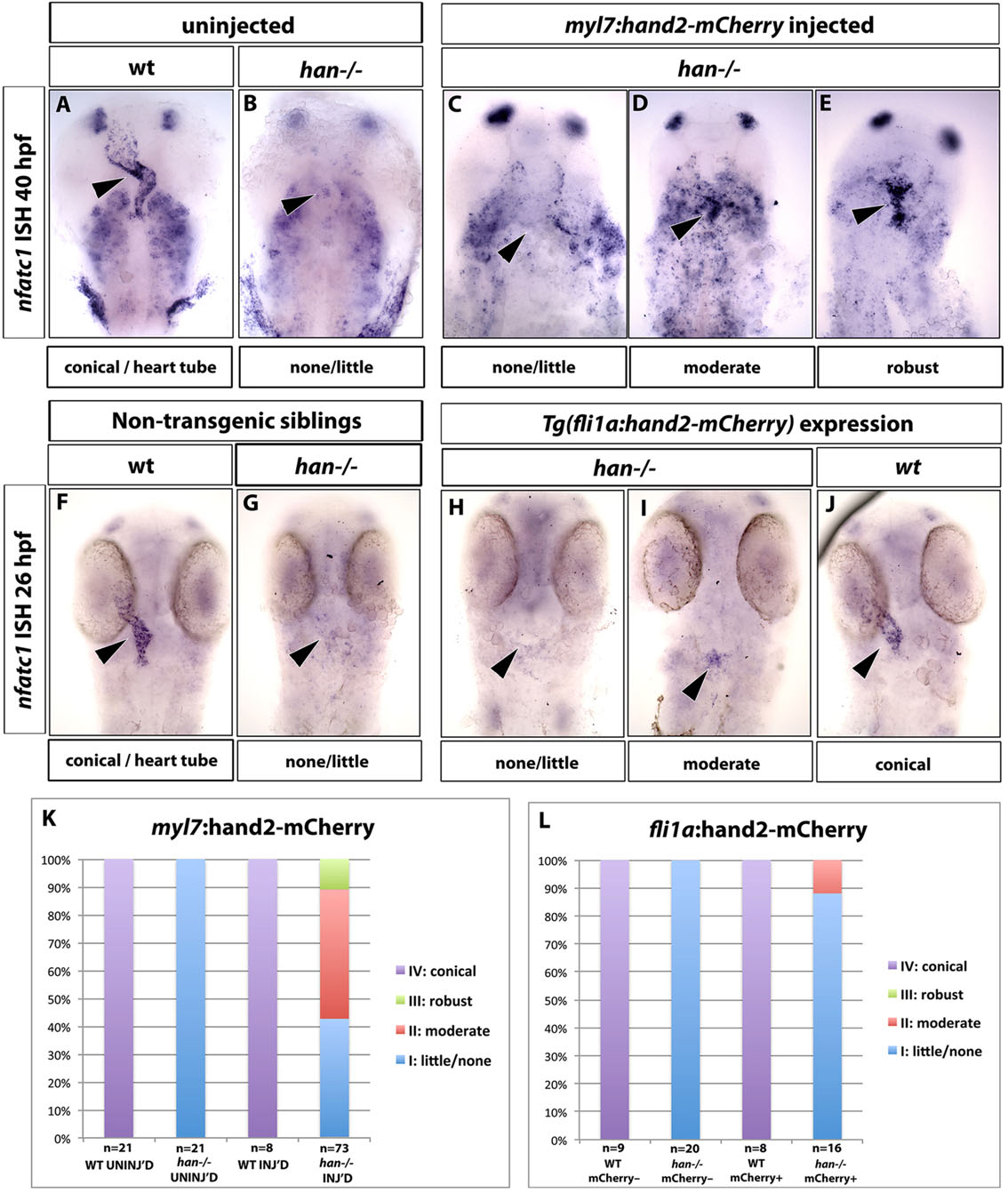Fig. 2
Hand2 function is required within the myocardium for endocardial nfatc1 expression.
(A-E) Transient overexpression of a hand2-2A-mCherry construct under the myocardial-specific myl7 promoter results in a partial rescue of nfatc1 expression in hand2 mutants. In situ hybridization analysis of nfatc1 expression at 40hpf. In uninjected wild-type embryos, nfatc1 is expressed throughout the endocardium with a higher concentration at the A/V boundary (A, arrowhead). Endocardial nfatc1 expression is absent in uninjected hand2 mutants (B, arrowhead). (C-E) Representative embryos within different categories of rescued endocardial nfatc1 expression (arrowheads). nfatc1 expression is also observed in pharyngeal arches. (F-J) Endothelial/endocardial-specific overexpression of hand2-2A-mCherry under the fli1a promoter fails to rescue endocardial nfatc1 expression in hand2 mutants, as analyzed by in situ hybridization at 26hpf. (F,G) Non-transgenic (fli1a:hand2-mcherry) embryos in wild-type (F) and hand2-/- (G) background. (H-J) fli1a:hand2-mCherry-positive embryos in wild-type (J) and hand2-/- (H,I) background. Eighty-nine percent of fli1a:hand2-mCherry+; hand2-/- embryos had little or no nfatc1 expression (H) and 11% had moderate nfatc1 expression, not significantly different from non-transgenic (fli1a:hand2-mCherry) embryos (see L). Arrowheads indicate endocardial nfatc1 expression. (K,L) Percentages of myl7:hand2-mCherry and fli1a:hand2-mCherry embryos and their siblings in wild-type and hand2-/- background that showed different levels of nfatc1 expression.

